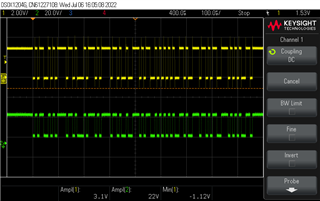I measured A with an oscilloscope.

Setting
* VCC, VL = 3.3V
* nRE / DE = Pull up (3.3v / 6k Ohm)
* Terminator Resistor = Side 120 Ohm

Ch 1 = SN65HVD01 R Digital Output (2pin)
Ch 2 = SN65HVD01 A Bus I/O
The timing is correct, but it is strange that it outputs more than 20v.
Why is it outputting more than 20v????

